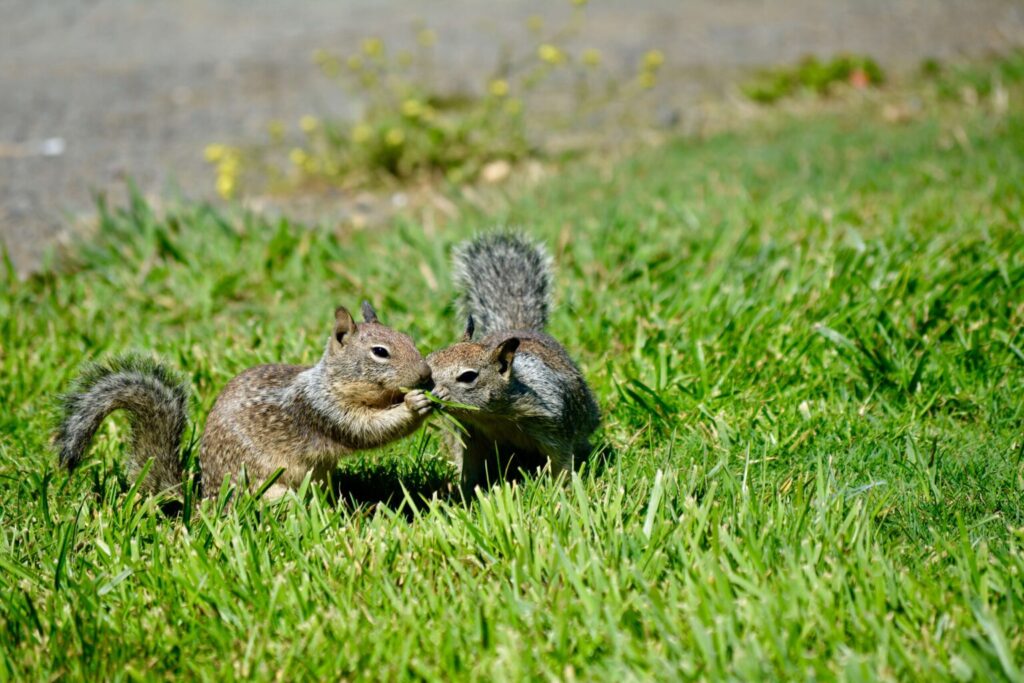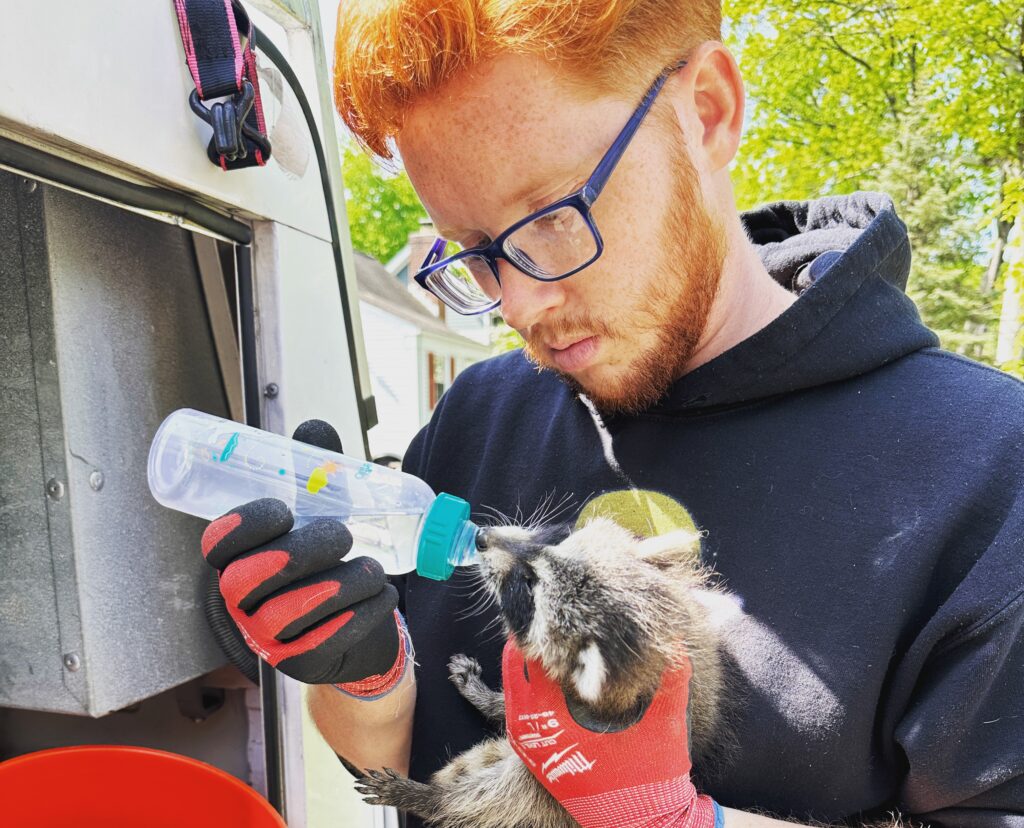In the enchanting tapestry of our natural world, squirrels contribute their own lively thread, adding vibrancy to the ecosystems they inhabit. However, when these bushy-tailed creatures decide to set up residence in our homes, attics, or gardens, the delicate balance between wildlife and human habitation can become strained. The challenge then lies not only in ensuring the peaceful coexistence of humans and squirrels but also in mastering the art of humane squirrel removal.
In recent times, the call for humane practices in dealing with wildlife intrusions has gained prominence. Recognizing the intrinsic value of every creature in our shared environment, a shift towards humane squirrel removal has become not only an ethical obligation but also an essential aspect of responsible wildlife management. This article aims to delve into the intricacies of mastering the art of humane squirrel removal, offering insights into understanding squirrel behavior, exploring the consequences of inhumane removal methods, and providing practical tips and tricks for both do-it-yourself enthusiasts and those considering professional assistance.
Understanding squirrel behavior is the first step in fostering a coexistence that respects both human needs and wildlife autonomy. From the bustling parks to the quiet corners of suburban gardens, squirrels exhibit distinct behaviors that, when comprehended, can guide us towards harmonious solutions. As we embark on this exploration, it becomes evident that the success of humane squirrel removal lies not just in the elimination of a nuisance but in striking a delicate balance that safeguards the welfare of these charming creatures while addressing the concerns of those who share their space.
Key Takeaways
- Embrace humane techniques for squirrel removal to preserve wildlife and create a harmonious coexistence.
- Understand squirrel behavior to inform effective prevention and removal strategies.
- Recognize the consequences of inhumane methods on ecosystems and legal implications.
- DIY approaches empower homeowners, emphasizing sealing entry points and ethical trapping.
- Professional removal services offer efficient, ethical solutions, focusing on live trapping and relocation.
Understanding Squirrel Behavior
To embark on the journey of mastering humane squirrel removal, we must first unravel the intricate tapestry of squirrel behavior. Squirrels, with their quick and nimble movements, are not merely opportunistic foragers but integral components of our ecosystems. Typically arboreal, these rodents are adept climbers, leapers, and runners, making trees and elevated spaces their preferred domains. Their bushy tails serve not only as an emblematic feature but also aid in balance during acrobatic feats and act as a communication tool.
Squirrels are known for their prolific breeding habits, with varying species having specific mating seasons. The need for secure nesting places often draws them into residential areas, seeking shelter in attics, chimneys, or tree hollows. Understanding these natural inclinations allows us to anticipate their movements and implement humane strategies that work in harmony with their instincts.
Beyond their physical characteristics, squirrels communicate through vocalizations, body language, and scents. Recognizing the subtle nuances in their communication can offer insights into their state of alertness, potential threats, or even the presence of predators. As we unravel the layers of their behavior, we gain a deeper appreciation for the intricate social structures within squirrel communities and the necessity of approaching their removal with sensitivity.
Squirrels are persistent foragers, and their diet primarily consists of nuts, seeds, fruits, and occasionally fungi or insects. This penchant for foraging often brings them into contact with human habitats, leading to scenarios where understanding their behavior becomes pivotal for effective, humane management. By appreciating the adaptability and resourcefulness of squirrels, we can develop removal strategies that address their needs while safeguarding our living spaces, fostering a coexistence that respects the essence of these remarkable creatures in our shared environment.
The Consequences of Inhumane Removal Methods
When faced with the intrusion of squirrels into our living spaces, the impulse to resort to quick and seemingly effective removal methods can be strong. However, the repercussions of employing inhumane techniques extend beyond the immediate goal of eviction, leaving a lasting impact on both the local environment and the delicate balance of wildlife ecosystems.
One significant consequence lies in the negative impact on the squirrel population itself. Inhumane removal methods, such as the use of lethal traps or poisons, not only cause suffering to individual animals but also disrupt the natural dynamics of local squirrel communities. Squirrels play crucial roles in seed dispersal and tree regeneration, contributing to the overall health of forests and urban green spaces. Indiscriminate removal, especially through lethal means, can lead to a decline in the squirrel population, potentially affecting the biodiversity and ecological equilibrium of an area.
Environmental consequences further compound the issue. Inhumane removal methods often involve the use of toxic substances or traps that can unintentionally harm other non-target wildlife. Birds of prey, domestic pets, and even endangered species may fall victim to secondary poisoning or injuries caused by indiscriminate removal attempts. This collateral damage poses a threat to the broader ecosystem, creating a ripple effect that disrupts the delicate web of interconnected species.
Beyond ecological concerns, there are legal implications associated with inhumane wildlife control. Many regions have enacted laws and regulations to protect wildlife from unnecessary harm, and employing cruel removal methods may lead to legal consequences for individuals or organizations involved. As awareness of ethical wildlife management grows, adherence to humane practices becomes not just a moral imperative but a legal obligation.
In navigating the challenges of squirrel intrusion, it is essential to recognize that inhumane removal methods not only compromise the welfare of individual animals but also jeopardize the ecological harmony that sustains our shared environment. Adopting humane approaches not only reflects a commitment to ethical stewardship but also ensures the preservation of biodiversity and the well-being of all creatures coexisting in the intricate tapestry of our natural world.
Humane Squirrel Removal Techniques
In the pursuit of coexistence with our furry neighbors, embracing humane squirrel removal techniques becomes paramount. Unlike inhumane methods that may cause harm or distress, humane approaches prioritize the well-being of both humans and squirrels, acknowledging the importance of fostering a harmonious balance within our shared environment.
One fundamental strategy in humane squirrel removal involves prevention and exclusion. Identifying and sealing potential entry points, such as gaps or openings in attics, roofs, or walls, serves as a proactive measure to deter squirrels from establishing nests in residential spaces. Additionally, installing squirrel-proof barriers, such as mesh screens or vent covers, prevents access to vulnerable areas while respecting the natural instincts and behaviors of these arboreal creatures.
Safe and ethical trapping methods are another cornerstone of humane squirrel removal. Live traps, designed to capture squirrels without causing harm, offer an effective means of relocation. Proper placement and baiting techniques play crucial roles in the success of live trapping, allowing for the capture of the targeted squirrel without endangering other non-target wildlife. Once captured, the relocation process should be handled with care, considering suitable release locations that provide adequate resources for the squirrel’s survival.
An often-overlooked aspect of humane removal involves understanding the need for squirrel-proofing your property after eviction. Employing long-term solutions, such as reinforcing barriers and addressing potential entry points, ensures a sustained coexistence without resorting to repeated removal efforts.
Humane squirrel removal is not solely the responsibility of professionals. Do-it-yourself enthusiasts can also contribute by adopting humane practices. Educating oneself on the behavior and habits of squirrels, combined with the proper use of humane trapping methods, empowers individuals to address intrusions with compassion and effectiveness.
By embracing these humane removal techniques, we not only resolve immediate issues of squirrel intrusion but also contribute to the broader narrative of responsible wildlife management. Creating a living space where humans and squirrels can coexist peacefully underscores the importance of preserving the natural world while respecting the unique role that each species plays in maintaining the delicate equilibrium of our shared ecosystem.

DIY Approaches to Humane Squirrel Removal
Taking matters into your own hands when faced with a squirrel intrusion can be both empowering and effective, provided you approach the situation with a blend of knowledge and empathy. DIY approaches to humane squirrel removal revolve around understanding the nuances of squirrel behavior and implementing strategies that prioritize their welfare while addressing human concerns.
A fundamental step in the do-it-yourself approach involves identifying and sealing potential entry points. Squirrels are resourceful, and small openings in attics, roofs, or walls can serve as inviting access points. Conduct a thorough inspection of your property, paying attention to vulnerable areas, and seal any gaps or cracks that could be exploited by these acrobatic creatures. This not only discourages their presence but also prevents future incursions.
Installing squirrel-proof barriers constitutes another practical DIY method. Mesh screens or vent covers, strategically placed, create a physical deterrent without causing harm. By incorporating these barriers into your home’s infrastructure, you create an environment that respects the natural behaviors of squirrels while protecting your living space.
When opting for live trapping, a humane and effective method in DIY squirrel removal, careful consideration must be given to trap placement and baiting. Choose locations frequented by squirrels, and use bait that aligns with their dietary preferences. Peanut butter, nuts, or seeds are enticing options that can lure the squirrels into the trap without causing any harm.
DIY enthusiasts should also be mindful of the potential need for relocation after capturing a squirrel. Identify suitable release locations, preferably wooded areas with a water source and abundant food supply, ensuring the squirrel has the best chance of survival post-relocation.
Embracing DIY approaches to humane squirrel removal empowers individuals to coexist with wildlife responsibly. By combining an understanding of squirrel behavior with strategic interventions, homeowners can create an environment that upholds the principles of humane wildlife management, fostering a balance where both humans and squirrels thrive in harmony.
Professional Humane Squirrel Removal Services
Ethical Considerations in Humane Squirrel Removal
Beyond the practical aspects of squirrel removal, ethical considerations play a pivotal role in shaping our approach towards coexisting with wildlife. Recognizing the intrinsic value of every living being and acknowledging the interconnectedness of ecosystems prompts us to adopt practices that prioritize empathy, sustainability, and respect in the process of dealing with squirrel intrusions.
A fundamental ethical consideration revolves around the balance between human needs and the preservation of wildlife. It requires us to navigate the fine line between safeguarding our homes and recognizing the rightful place of squirrels in our shared environment. By approaching squirrel removal with a mindset that seeks harmonious coexistence, we uphold the ethical principle that acknowledges the importance of biodiversity and the role each species plays in the delicate tapestry of nature.
Educating communities on the ethical dimensions of humane squirrel removal is equally essential. Promoting awareness about the consequences of inhumane methods and fostering a collective commitment to ethical wildlife management contributes to a culture that values the well-being of all living creatures. This shared understanding encourages responsible actions at both individual and community levels, creating a ripple effect that extends beyond immediate removal efforts.
Furthermore, ethical considerations prompt us to view squirrel removal not as a one-time task but as part of a broader commitment to environmental stewardship. This involves adopting practices that minimize human-wildlife conflicts in the first place, such as securing garbage bins, using squirrel-proof bird feeders, and implementing landscape designs that deter squirrels from nesting in close proximity to homes.
In essence, ethical considerations in humane squirrel removal call for a shift in perspective – one that values the lives of squirrels as integral components of our ecosystems and recognizes our responsibility as stewards of the environment. By weaving ethical considerations into our approach, we not only resolve immediate issues but contribute to the broader narrative of sustainable coexistence, fostering a world where humans and wildlife thrive together in harmony.
FAQs
Why should I choose humane squirrel removal methods?
Humane methods prioritize the well-being of squirrels and contribute to a more ethical approach to wildlife management.
What are common signs of a squirrel infestation in my home?
Look out for scratching noises, chewed wiring, and droppings as potential indicators of a squirrel presence.
Are live traps effective for squirrel removal?
Yes, live traps can be effective if strategically placed and baited correctly to capture squirrels without causing harm.
Is DIY squirrel removal safe and humane?
Yes, with proper knowledge and humane techniques, DIY squirrel removal can be both safe and ethical.
How can I squirrel-proof my property after removal?
Reinforce barriers, seal entry points, and consider using deterrents to minimize the risk of future infestations.
Conclusion
In conclusion, mastering the art of humane squirrel removal is not merely a practical necessity but a moral imperative in our shared environment. By delving into the intricate tapestry of squirrel behavior, we gain valuable insights that guide us toward effective, compassionate solutions. The consequences of inhumane methods ripple beyond immediate concerns, impacting ecosystems and inviting legal repercussions.
Whether opting for DIY approaches, leveraging professional services, or incorporating ethical considerations into our practices, the key lies in finding a balance. We must safeguard our homes without compromising the well-being of these lively creatures that contribute to the biodiversity of our surroundings.
DIY enthusiasts can play a crucial role in coexistence by applying humane techniques, understanding preventive measures, and actively participating in ethical wildlife management. Meanwhile, professional services offer a comprehensive, efficient approach, combining expertise in live trapping and relocation.
Ethical considerations serve as the cornerstone of responsible squirrel removal. It prompts us to view these creatures not as mere nuisances but as integral components of our ecosystems. By fostering a culture of awareness and commitment within our communities, we contribute to a world where ethical wildlife management is a shared responsibility.
As we embark on this journey of coexistence, let us not only address immediate concerns but also view squirrel removal as part of our broader commitment to environmental stewardship. By taking responsible action now, we create a sustainable legacy for future generations, where humans and wildlife thrive together in harmony.
For immediate assistance and ethical squirrel removal services, call Kritter Catchers now at +1-877-468-5748. Let’s take a step towards a world where humane practices define our interactions with wildlife, ensuring a balance that respects the intricate beauty of nature.


